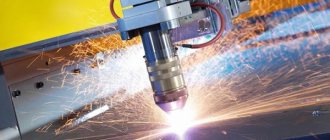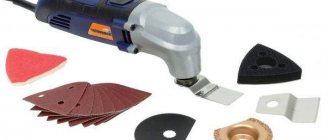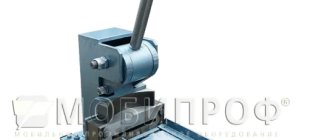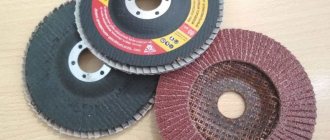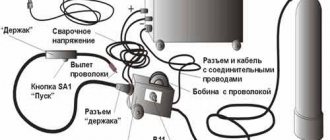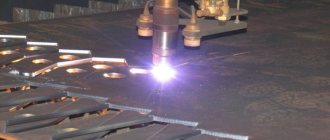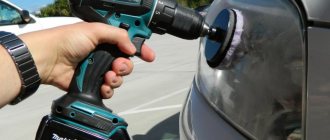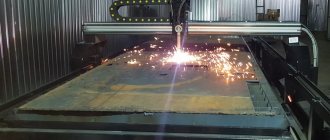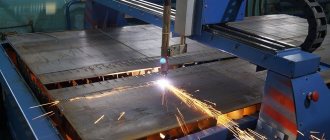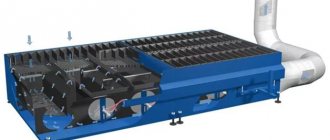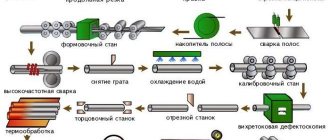ABICOR BINZEL offers branded reliable plasma cutters with liquid and air cooling systems that contribute to consistent high quality performance and excellent results. By design, they are extremely durable, provide excellent cooling, which guarantees a long service life of the products themselves and their replacement parts, which wear out over time and require replacement. For high-amperage loads, the company offers optional plasmatrons that can be operated with non-contact ignition of the arc using a high-frequency discharge.
What it is?
A plasma torch is a device for generating plasma - an ionized gas with quasi-neutral properties used for processing metals. Its design uses electric current and plasma-forming gas to generate and stabilize a plasma jet.
Figure 1. Plasmatrons for hand-held devices and CNC units
Design
Structurally, plasma torches for cutting sheet metal and metal workpieces consist of the following components:
- nozzle;
- electrode;
- element for swirling the air flow (swirler);
- fluoroplastic body;
- nozzle nut;
- insulating sleeve;
- electrode assembly;
- casing
Figure 2. Standard plasma torch design
Device
Purpose of the main elements of the plasma torch:
- Nozzle – is the tip of the cutter, used to form the shape of the plasma jet. Typically made of copper, the design is determined by the type of plasma cutting machine.
Photo 3. Appearance of the nozzle
- Electrode (cathode) – used to ignite and maintain the plasma arc. It is made from refractory metal and has a zirconium or hafnium insert. Selected depending on the equipment and material being cut.
Photo 4. Appearance of the cathode
- Swirler (diffuser) - necessary to increase pressure and slow down the plasma flow during the cutting process.
Photo 5. Swirlers
Operating principle
The principle of operation of plasma torches is to supply a plasma-forming gas into the discharge chamber (here it is ionized) and to carry the plasma jet beyond the gap between the nozzle and the cathode to the surface of the metal being cut.
Figure 6. Design diagram of a water-cooled plasmatron
The plasma cutting process begins with the ignition of a pilot arc between the cathode and the nozzle as a result of applying high voltage. It serves to create the main (cutting) arc when touching a metal workpiece.
A small hole in the nozzle forms a directional plasma jet flowing at a speed of up to 3 km/second. In this case, the jet temperature reaches 5000-30000 °C. The targeted effect of plasma provides instant heating of the metal until it melts and blows it out of the cutting zone.
To obtain a part of a given size and shape, the plasma torch is directed along a specific contour. When cutting, it is important to maintain a constant gap between the material being cut and the nozzle, which allows you to obtain smooth edges with a minimum amount of slag and scale.
Photo 7. The process of cutting blanks of complex configuration using a numerically controlled machine
Scope of application, pros and cons of plasma cutting
Plasmatrons are widely used in the following industries:
- heavy engineering;
- automobile, aircraft, shipbuilding;
- metallurgy;
- metalworking factories and companies;
- enterprises and companies producing metal structures;
- construction industry.
Plasma metal cutting technology has many advantages:
- High cutting speed – 5-10 times higher compared to oxy-fuel cutting.
- Fast burning of material - the burning time of a steel sheet with a thickness of 15 mm is within 2 seconds.
- Minimum heat affected zone – eliminates the possibility of workpiece deformation, which is especially important when cutting thin sheet metal.
- Improved cut quality - the plasma jet minimizes the amount of scale and slag, so additional edge processing is usually not required.
- High precision - the minimum cutting width and the use of special automation devices make it possible to obtain workpieces with the most accurate configuration and dimensions.
- Versatility - this method is used for figured and straight cutting of steels of any grade, non-ferrous metals, as well as their alloys.
- Possibility of automation - you can buy either a manual device or a more productive CNC machine.
- Easy to maintain and operate.
Unlike air-arc cutting, where operating parameters are determined by the rate of air flow per minute and the type of gas used, the stability of the cutting process with a plasma jet and the quality of the cut depend on the correct choice of plasma-forming gas, current strength, and maintaining a constant gap between the nozzle and the material being processed.
Photo 8. The process of cutting parts with a manual plasma cutter
Plasma torch device
The design of a plasma torch for cutting metal is represented by the following structural elements:
- Electrode/cathode with an insert made of zirconium or hafnium - metals with high thermionic emission
- Plasmatron nozzle, usually isolated from the cathode
- Mechanism for swirling plasma-forming gas
Nozzles and cathodes are the main consumables of plasma torches. When the thickness of the metal being processed is up to 10 mm, one set of consumables is enough for one work shift – eight hours of work. The nozzles and cathodes of plasma torches, as a rule, wear out at the same rate, so their replacement can be organized at the same time.
Untimely replacement of consumables can have a great impact on the quality of the cut: for example, if the geometry of the nozzle is violated, the effect of an oblique cut may occur, or waves will appear on the cut surface. The wear of the cathode is expressed in the gradual burnout of the hafnium insert, the production of which in a volume of more than 2 mm contributes to the burning of the cathode and overheating of the plasma torch. Thus, untimely replacement of worn-out consumables entails faster wear of the remaining components of the plasmatrons.
To protect the plasma torch from splashes of molten metal and metal dust during operation, a special casing is put on it, which must be removed from time to time and cleaned of contaminants. Failure to use a protective casing leads to the risk of a negative impact of the above contaminants on the quality of operation of the plasma torch and even to its breakdown. In addition to cleaning the casing, it is worth cleaning the plasma torch itself from time to time.
You can learn more about plasma cutting technology by watching the following video:
Operating procedure
Initially, you need to prepare the plasma cutter for work - depending on the type, it operates on a 220 or 360 V network. The preparation sequence is as follows:
- The device is installed in a place where there is good air access, and it should not be exposed to splashes of molten metal during operation.
- The equipment must be operated in a ventilated area equipped in accordance with fire safety regulations. The device must be protected from accidental ingress of moisture - for this purpose it is often even equipped with a moisture-oil separator to prevent them from entering the plasma torch structure, which leads to a decrease in the service life of consumables.
- It is advisable to also prepare the rolled metal to be cut - paint coating and corrosion lead to increased smoke emission, but do not affect the quality of the cut.
- Periodically it is necessary to check the integrity and cleanliness of the electrode and nozzle. The frequency depends on the intensity of use - for example, with constant operation, they may require replacement after an 8-hour work shift.
A high-quality cut without sagging and scale is possible only if the current strength is chosen correctly. It is selected taking into account the type of metal being cut and thickness. Dependence of current strength for cutting workpieces 1 mm thick from the following materials:
- Structural steel and cast iron - 4 A.
- Non-ferrous metals and their alloys – 6 A.
The cutting speed also affects the quality of the cut. It can reach 0.2-2 m/minute and depends on the thickness, type of material, and set current strength. In automated equipment, the speed is set by the program, but in a manual process, the cutter is responsible for this.
Before starting work, you need to blow out the plasmatron to remove foreign particles and condensate - to do this, press the ignition button and wait about half a minute. Then you can ignite the pilot arc; it burns for up to 2 seconds, after which the working plasma arc ignites.
An important point when plasma cutting is to maintain a constant distance between the nozzle and the metal being processed (usually 1.6-3 mm) - this affects the stability of the working arc and the quality of the cut. However, there are special guides for hand-held cutters on sale, which greatly facilitate the work process and increase productivity.
Photo 9. Guide device for maintaining a constant gap between the nozzle and the workpiece.
During operation, the cutter nozzle should be located perpendicular to the metal being cut or at a slight angle (deviation up to 10-50°) when cutting materials with a thickness of up to 25% of the maximum allowable for specific equipment. This technique will minimize the risk of deformation of thin-sheet workpieces.
Operating principle of a hand-held plasma torch
In many modern plasma cutters, a primary arc generated between the electrode and the nozzle is used to ionize the gas and generate plasma in the plasma torch itself, before the arc is transferred to the metal being processed.
In hand-held plasma torches, such transfer occurs when the tip comes into contact with the metal. A spark is created, after which a high-frequency circuit is launched, the arc in which begins to burn smoothly and steadily.
The main characteristics of a hand-held plasma torch are:
- Ignition current, A.
- Operating current, A.
- Arc width, mm.
- Plasma flow speed, m/s.
The high cutting speed of the plasma torch is ensured by a specially shaped output nozzle. It causes the ionized gas to compress at high speed. In this case, the concentration of thermal power reaches limits sufficient for local melting of the metal.
The plasma torch burner includes two concentrically located tubes. The plasma flow moves in the inner one, and the gas heated to lower temperatures moves in the outer one. This external flow encloses the perimeter of the cutting zone, ensuring precise cutting, and protects adjacent areas from oxidation.
Types of plasma cutters
Plasma torches for plasma cutting of metals are produced in different modifications according to the type of cutting, arc ignition, and with different operating parameters.
Plasma cutters by cutting type
Based on the type of cutting, a distinction is made between manual machines and automatic CNC machines. It all depends on the work being performed and the maximum thickness of the metal being cut.
Plasma cutters for manual cutting
Plasmatrons for manual cutting are used in various industries - from small auto repair shops to industrial enterprises. The cutting process involves manually operating the cutter – i.e. The cutter independently regulates the cutting speed.
Photo 10. Manual plasma cutting
The manual cutting process does not provide as much precision and productivity as the automatic one. However, the devices are more compact, which makes them possible to transport. Inverter devices can even be carried manually, since their weight does not exceed 15-20 kg.
Plasma cutters for automatic cutting
Plasmatrons for automatic cutting differ in design - it depends on the type of equipment on which the device will be installed. The automatic cutting process is characterized by increased productivity; it is usually performed on a special table on which sheets of the metal to be cut are laid. There are also portable machines for cutting small workpieces. They are controlled by CNC (computer numerical control), which minimizes the human factor.
Photo 11. Automatic plasma cutting
Main advantages:
- high cutting speed;
- increased accuracy and quality of cut;
- automated adjustment of operating parameters (current strength, gas pressure, distance between the nozzle and the workpiece) taking into account the thickness and grade of the metal.
Plasma cutters by type of gas used
Plasmatrons work with different gases - inert, reducing, chemically active and mixtures thereof. They are selected depending on the grade of metal being processed:
- Compressed air – ferrous metals and copper up to 60 mm thick, aluminum up to 70 mm.
- Nitrogen – aluminum and copper up to 20 mm thick, low-carbon low-alloy steels up to 30 mm, with a high content of alloying elements up to 75 mm, brass up to 90 mm, titanium of unlimited thickness.
- Hydrogen nitric – copper, aluminum and their alloys up to 100 mm thick.
- A mixture based on nitrogen and argon - highly alloyed materials up to 50 mm thick.
- Argon and hydrogen – high-alloy steels, aluminum and copper alloys up to 100 mm thick.
Plasma cutters based on arc ignition type
Produced with direct and indirect action arc. A direct arc is excited as a result of the flow of electric current between the cathode (non-consumable electrode) and the anode, which is a metal workpiece. An indirect arc is ignited between the cathode and the nozzle, but such devices are used much less frequently.
Figure 12. Schemes of direct and indirect plasma torches
Plasma cutters by cooling type
Cooling of plasma torches can be of the following types:
- Water - mainly professional modifications are equipped that work continuously for a long time. The circulation of liquid in them is ensured by a special pump.
- Air – equipped with semi-professional and household models. The internal elements of the burners are cooled by the passage of compressed air or gas through the channels. Such devices have a lower duty cycle and require breaks during operation.
Device
The burner consists of:
- an electrode holder electrically isolated from both inner tubes;
- a vortex ring that ensures circular motion of the plasma;
- a hollow electrode, inside of which the working and shielding tubes are installed;
- return spring;
- tip;
- protective cap.
Structurally, a plasma torch for plasma cutting also includes hoses through which plasma-forming air is supplied.
The shape of the hole in the nozzle determines the size and configuration of the arc. It is designed in such a way as to withstand a flow of ionized gas heated to 4500...5000°C, at a current density of up to 40000°C/mm2.
The operating sequence of a hand-held plasma torch is as follows. When the equipment is turned off, the working surfaces of the part and the tip are in contact with each other, so the plasma torch head should not be pressed against the metal. When the cutter is turned on, the power source begins to generate direct current, the power of which can reach 500 A. The current ionizes the air in the space between the tubes, which gradually ionizes, acquiring the required temperature. As a result, a flow of plasma-forming gas is initiated. When the gas pressure increases to the required limits, the spring moves the electrode and nozzle apart. A gap is formed in which an electric spark is excited. It converts the air flow into a plasma jet. Then the direction of the direct current is switched along the shortest path between the electrode and the workpiece. This movement continues until the trigger is returned to its previous position.
How to choose a plasma cutter?
The choice of a plasmatron for cutting metal is made according to performance characteristics, taking into account the work performed (dimensions, thickness and type of rolled metal).
Thickness of the metal being cut and current strength
The expected thickness of the metal being processed affects the rated current of the equipment - for example, to cut ferrous metal and stainless steel, 4 A of power is needed for every 1 mm of thickness. Therefore, to cut 10 mm sheet structural steel, you need to set the operating current to 40 A. At the same time, it is better to buy a plasma cutter with a small power reserve.
Duration of activation
PV or on-duration determines the time of continuous operation of the device. If the technical characteristics of a plasma cutter indicate a duty cycle of 60%, this means that out of a working cycle of 10 minutes it can operate continuously for 6 minutes. If this threshold is exceeded, overheating and failure are likely.
Recommended PV values depending on the scope of application:
- Domestic needs - 40% PV is sufficient.
- Workshops, small metalworking companies - PV 60%.
- Large factories, enterprises for the production of metal structures - PV 80-100%.
Required compressor power
The stability of the plasma cutting process directly depends on the compressor power. Therefore, the device should have 20-25% greater productivity than indicated in the plasma cutter passport. It is also desirable that it be equipped with an oil and moisture separator to eliminate the influence of condensate and impurities on the quality of the plasma.
Hosepack length
The length of the hose package can range from 1.5 to 8 or more meters, so when choosing, you need to be guided by the overall dimensions of the rolled metal with which you are supposed to work.
Video on how to choose a plasma cutter
Kinds
ABIPLAS CUT plasma cutters are available in manual and mechanized versions and are used for plasma cutting using compressed air. The latter plays a plasma-forming and cooling role. The product is intended for individual use in continuous operation, even under difficult conditions. Can be used in any cutting position that is commonly practiced and most common in this area.
ABICUT are plasmatrons that are cooled by air flow. They are used for plasma air cutting. The applied current can range from 20 to 75 A. The product allows you to obtain high quality cutting, it is highly durable and maximum ease of use. The system works optimally in any cutting position without losing its positive properties.
This plasmatron fits comfortably in the palm of your hand, which contributes to high quality work, allowing the master to perform all actions accurately and efficiently. The structure of its handle allows you to work for a long time without getting tired. Innovative protection against self-starting ensures maximum safety of the device, and the reliable design of the product and cooling capabilities are the key to its long service life.
